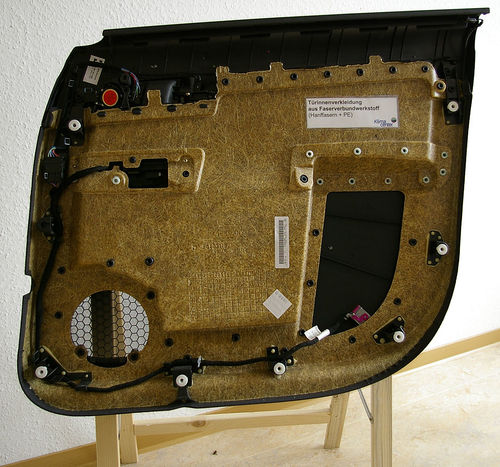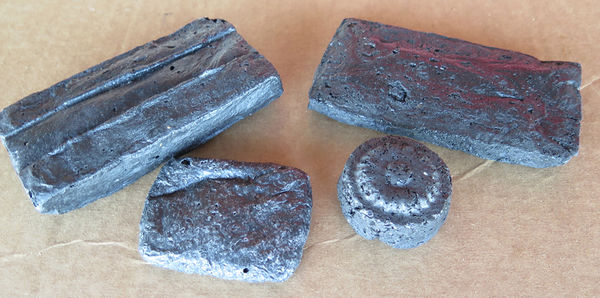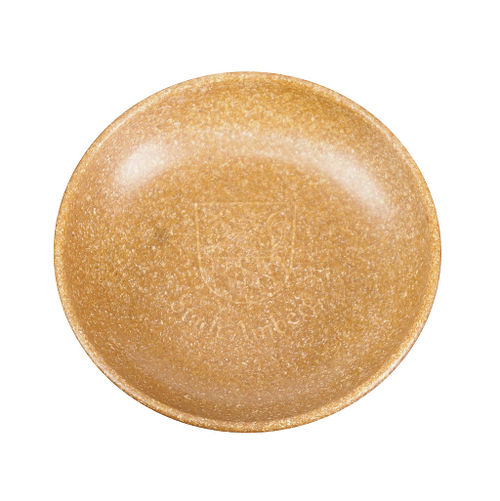Biocomposite
Jump to navigation
Jump to search



Interior carpeting of a car's door made by a biocomposite of hemp fibres and polyethylene
A biocomposite is a composite material of resin plus reinforcement with natural fibers (example: hemp fibres and polyethylene). The earliest composite materials were straw and mud combined to form bricks for building construction.
Green Composites: natural fibers with biodegradable resins (see: Bioplastics)
Hybrid Composites: different types of fibers (synthetic, biological) combined into a single matrix.
Examples
- Examples of natural fibers: straw fibers, bast, leaf, seed or fruit, and grass fibers.
- Widely used: Flax, Jute, Kenaf, Sisal and Coir.
- also widely used is Hemp (see: hempcrete). It is of interest to automotive and other applications due to these features: cost effective, high tensile strength and stiffness, ideally suited for needle punched nonwoven products, effective replacement for glass fiber, reduces molding time, weight reduction in finished part, easy to process and recycle, can be customized to meet a variety of specifications and different manufacturing systems, consistent quality and availability of supply is possible.
- Many polymers, such as polyethylene (PE), polypropylene (PP), and polyvinyl chloride (PVC) are being used in wood composites industries.
- Polylactic acid can also be used as a matrix material (example)
- Natural Fibers Carbonised into Carbon Fiber
- Semi Synthetic Fiber Composite Materials using reformed cellulose
OSE Wiki Links
- Composite materials
- Wood Wool: panels made with a binder of cement or lime
- Car/Research Development
- other: Bioplastics, Basalt Fibers, Ferrocement
External Links
- Wikipedia: Biocomposite and Composite material
- Wikipedia: Cement-bonded wood fiber

Biochar-foamed polystyrene composite: to make these items, fine particles of biochar were embedded in recycled (melted) foamed polystyrene. Courtesy of Kathleen Draper from Finger Lakes Biochar.
